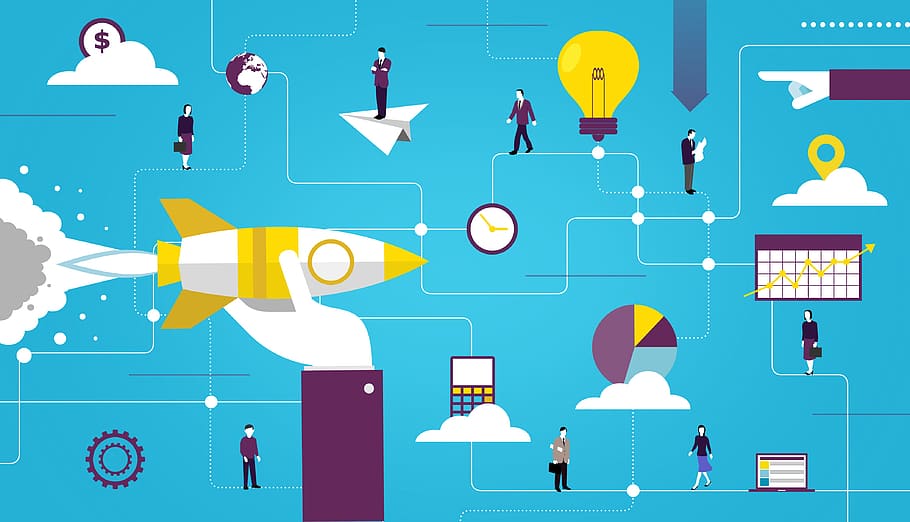The world of Customer Relationship Management (CRM) is no longer defined by simple databases and sales pipeline tracking. The current “next generation” of CRM platforms represents a fundamental shift from systems of record to systems of intelligence, leveraging cutting-edge technologies like Artificial Intelligence (AI), machine learning (ML), and deep process automation to transform how businesses interact with their customers. These new platforms are designed not just to track relationships, but to predict future outcomes and autonomously execute the best customer-centric actions, making them indispensable to modern business strategy.
I. The Shift from Tracking to Predictive Intelligence
Traditional CRM systems primarily served as historical repositories—recording past interactions and status updates. The next generation moves beyond this, incorporating AI and ML to offer proactive, predictive, and prescriptive insights that drive revenue and enhance loyalty.
A. AI-Powered Sales Forecasting
Modern CRMs use historical sales data, external market factors, and individual rep behavior to generate highly accurate sales forecasts.
A. Advanced Lead Scoring: Machine learning algorithms analyze thousands of data points (website activity, email opens, social media engagement) to score leads more accurately than manual methods, identifying the leads most likely to convert.
B. Opportunity Risk Assessment: The system analyzes characteristics of ongoing deals to flag potential risks (e.g., stalled activity, competitor entry, budget changes) and proactively suggests interventions to the sales representative.
C. Prescriptive Next Steps: Rather than simply showing data, AI suggests the best next action for a salesperson to take—whether it’s sending a specific piece of content, scheduling a call, or initiating an internal review.
B. Generative AI for Content Creation
The integration of large language models (LLMs) allows CRMs to automate content personalized for specific customer stages and contexts.
A. Automated Email Drafting: AI drafts customized email responses or follow-ups based on the content of a customer’s inquiry or a meeting summary, ensuring rapid, contextual communication.
B. Dynamic Proposal Generation: The system integrates customer profile data with product catalogs to automatically assemble personalized sales proposals, reducing manual effort and potential errors.
II. Hyper-Personalization and the Unified Customer View
The goal of the next-gen CRM is to achieve hyper-personalization at scale, treating every customer interaction as unique. This requires a truly unified, single source of truth regarding the customer across all departments.
A. Integrating the Marketing-Sales-Service Stack
Legacy CRMs often had distinct, siloed modules for Marketing Automation, Sales Force Automation (SFA), and Customer Service Management (CSM). Next-gen platforms are built on a common data model.
A. Real-Time Data Synchronization: Ensuring that when a customer opens a marketing email, the service agent handling a complaint is instantly aware of that activity.
B. Journey Orchestration: Utilizing data from all touchpoints to map the customer journey dynamically and automatically trigger appropriate cross-departmental actions—for example, automatically enrolling a customer in a “high-value post-sale” sequence based on their purchase size.
B. Leveraging External Data Sources
Beyond internal interaction history, modern CRMs incorporate external data for deeper context.
A. Social Listening Integration: Monitoring social media feeds for mentions, sentiment, and trends related to the customer or their company.
B. Technographic and Firmographic Data: Automatically pulling data on a customer company’s current technology stack, financial health, recent press releases, and executive movements to inform sales strategy.
III. Automation and Low-Code/No-Code Platform Design
Efficiency and speed are paramount. The next generation of CRMs are built to automate routine, high-volume tasks, freeing up human staff for complex, high-value interactions.
A. Process Automation through Workflow Engines
Advanced workflow builders allow businesses to automate complex, multi-step processes without requiring IT intervention.
A. Automated Data Entry: AI captures data from emails, voice transcripts, and external forms and automatically populates the relevant CRM fields, significantly reducing administrative overhead for sales reps.
B. Service Case Routing: ML models analyze the content of incoming customer tickets and automatically route them to the agent with the appropriate specialized knowledge, improving resolution times.
C. Compliance and Governance: Automatically triggering mandatory compliance checks or approvals when deals exceed a certain financial threshold or involve regulated industries.
B. The Rise of Composable CRM
The monolithic CRM is giving way to a more flexible, composable architecture where businesses can select best-of-breed components and integrate them easily via APIs and low-code/no-code (LCNC) tools.
A. Citizen Development: LCNC interfaces empower non-technical users (“citizen developers”) to quickly build custom applications, dashboards, and integrations on top of the CRM platform, accelerating digital transformation.
B. Modular Microservices: The system is broken down into smaller, independent services (microservices) that can be updated, scaled, or replaced without affecting the entire system, ensuring agility and reliability.

IV. Enhanced Customer and Employee Experience
The focus of the next-gen CRM extends to improving the experience of both the customer (CX) and the internal user (EX – Employee Experience).
A. Immersive and Conversational CRM
The interface of the CRM is evolving from a data entry form to a conversational assistant.
A. Voice and Natural Language Processing (NLP): Salespeople can update records, check deal status, or schedule follow-ups simply by speaking to the CRM via mobile apps or desktop interfaces.
B. Contextual Insights Delivery: Instead of forcing users to navigate complex menus, the CRM proactively pushes relevant data and alerts directly to the user in the context of their current task, minimizing “toggle tax.”
B. Customer Service Innovations
The service module is the frontline of the CRM’s intelligence.
A. Self-Service Optimization: AI-powered chatbots and knowledge base articles proactively address common customer issues, reserving human agents for complex problems.
B. Emotion and Sentiment Analysis: The system analyzes the tone and content of customer interactions (voice, chat, email) to gauge sentiment and prioritize interactions based on urgency and emotional distress.
C. Agent Assist: Providing real-time, context-aware suggestions, scripts, and information snippets to service agents while they are speaking or chatting with a customer, effectively making them “super agents.”

V. Strategic Imperatives for CRM Adoption and Security
Adopting the next generation of CRM is not merely an IT upgrade; it’s a strategic business transformation that requires careful planning, change management, and a robust approach to data security.
A. Ethical AI and Data Governance
As CRMs become more reliant on AI and ML for decision-making (e.g., approving credit, assigning sales territory), ethical considerations become critical.
A. Bias Mitigation: Ensuring that the data used to train ML models is fair and that the CRM’s automated decisions do not perpetuate or create biases related to protected characteristics.
B. Transparency and Explainability: Implementing Explainable AI (XAI) features that allow users to understand why the CRM suggested a particular action or arrived at a specific forecast, building trust in the system’s intelligence.
B. Data Security and Privacy Compliance
The immense consolidation of customer data within the CRM makes it a prime target and a major compliance risk.
A. Zero-Trust Security Models: Implementing security architectures where no user or device is trusted by default, requiring verification at every access point to protect sensitive PII (Personally Identifiable Information).
B. Global Regulatory Compliance: Providing built-in features to manage data access and residency in compliance with global regulations like GDPR, CCPA, and similar consumer privacy laws, ensuring data integrity across international borders.
Conclusion
The next generation of CRM is evolving from a record-keeping tool to an Intelligent Relationship Platform that sits at the operational heart of the business. By seamlessly integrating AI, automation, a composable architecture, and advanced security, these systems are empowering organizations to move from reactive customer management to proactive, predictive engagement. Companies that successfully implement these platforms will not merely improve their sales and service efficiency; they will fundamentally redefine their relationships with customers, securing a decisive competitive advantage in the digital-first economy. Embracing this shift is crucial for long-term growth and sustainable customer loyalty.










